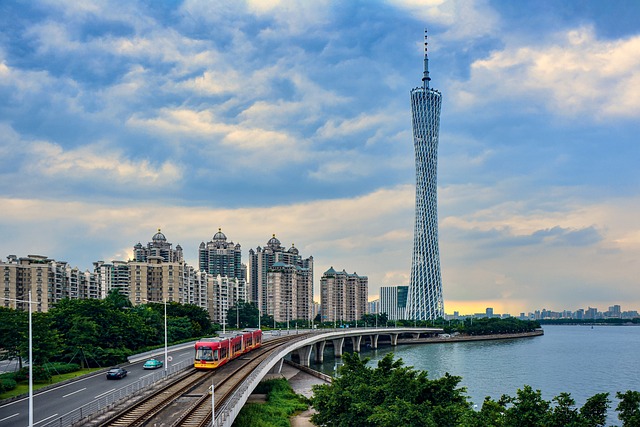China’s annual lianghui (两会), commonly referred to as the “two sessions,” concluded on March 11, marking the culmination of a pivotal political event that outlined modest climate objectives for 2024. The “two sessions” serve as a barometer for China’s overarching policy trajectory for the year, spanning a spectrum of issues ranging from economic strategies to industrial development to environmental stewardship.

Significance of China's "Two Sessions" in Shaping Policy
The "two sessions" symbolize the annual convergence of two paramount entities: China's preeminent legislative body, the National People's Congress (NPC), and the Chinese People's Political Consultative Conference (CPPCC), akin to the advisory nature of the UK's House of Lords albeit lacking legislative voting rights.
Spanning several days in Beijing, this assembly draws attendees from various spheres including members of the Chinese Communist Party, representatives from other political factions, academics, independent politicians, and notable figures. With nearly 3,000 delegates embodying the pluralistic essence of Chinese democracy, the event provides a platform for the propagation of diverse perspectives. Additionally, select ministers utilize the "minister's corridor" press conferences to elucidate their policy priorities.
Central to the "two sessions" is the presentation of the annual "government work report," traditionally delivered by the premier, the second most influential figure in China. This address not only lauds achievements from the preceding year but also delineates the focal points for the upcoming year, often including the unveiling of China's GDP growth target.
The concurrent unveiling of detailed plans by the National Development and Reform Commission (NDRC), China's top economic planner, further underscores the meticulous planning integral to meeting developmental targets.
Does the current "government work report" incorporate stringent climate targets?
This year's government work report disclosed limited quantitative climate objectives, notably a modest aim to reduce energy intensity—defined as energy consumption per unit of GDP—by 2.5 percent over the ensuing year, a target deemed conservative by Bloomberg. This figure fell short of analysts' projections of a 4 percent reduction.
Analysis by Carbon Brief indicates that to realize its 2025 objective of a 13.5 percent decline, China would need to annually decrease its energy intensity by 6 percent, necessitating a substantive reduction in energy demand.
Attributing the 2.5 percent target to considerations encompassing economic development, renewable energy integration, and the imperative for a green, low-carbon transition, the NDRC acknowledged challenges encountered in meeting energy and carbon intensity targets in 2023, primarily attributable to surges in industrial and civilian energy consumption.
Significantly, the NDRC recalibrated the energy intensity metric, now excluding non-fossil fuels and fossil fuel-based raw materials. This revision, as elucidated by Lauri Myllyvirta of the Asia Society Policy Institute (ASPI), effectively delineates the 2025 target as "fossil fuel intensity," hence characterizing it as "very soft-ball."
Myllyvirta contends that the report fails to address the overarching issue of escalating growth in energy-intensive sectors pivotal for sustaining China's economy amidst the Covid-19 pandemic. To achieve gains in energy intensity, he advocates for a reversal of growth trends in sectors like exports, heavy manufacturing, and construction, lamenting the omission of such concerns in the report's discourse.
Projected against Myllyvirta's analysis, a 2.5 percent reduction in energy intensity translates to a meager 3 percent decrease in carbon intensity at best, significantly falling short of the requisite 7 percent reduction to meet the 2025 target of an 18 percent carbon intensity reduction.
Is China's stance on climate ambitious?
The government's work report unveiled during the "two sessions" maintains continuity rather than heralding significant shifts in China's climate and energy policies. The rhetoric surrounding these policies continues to navigate the inherent tensions within China's energy transition.
It underscores China's commitment to balancing the priorities of "high-quality development" with heightened security concerns, urging policymakers to navigate climate targets both "actively" and "prudently".
Efforts will be directed towards curtailing carbon emissions and pollution, alongside the expansion of large-scale wind and solar installations, as well as distributed energy systems, according to the government's report.
Simultaneously, the report reaffirms China's dedication to fossil fuels, stressing coal's pivotal role in ensuring energy security while advancing the development of oil, gas, and strategic minerals.
Li Shuo, director of ASPI's China climate hub, notes a discernible struggle in the government's language, indicative of growing inconsistencies within policy narratives. He attributes this to the increasingly complex economic landscape and competing interests within the political ecosystem.
Moreover, the absence of specific targets concerning air pollution, forestry, and other environmental domains may signal a deprioritization of climate concerns or a diversion of attention towards pressing economic challenges.
Li expresses growing apprehension regarding China's ability to fulfill its broader climate objectives, citing a surge in energy consumption that could impede progress. He argues that adhering to a mere 2.5 percent annual reduction in energy intensity would be insufficient to meet the requisite targets.
Insights from high-ranking policymakers
The cancellation of widely followed press conferences and shifts in media attention during the "two sessions" underscore evolving dynamics within China's political landscape.
Key figures, including President Xi Jinping, emphasize the imperative of ecological protection amidst development, signaling continued commitment to environmental stewardship.
Ministry of Ecology and Environment (MEE) head Huang Runqiu underscores the long-term goal of constructing a "Beautiful China," prioritizing high-level protection alongside quality development.
National Energy Administration (NEA) director Zhang Jianhua advocates for improved communication on China's climate stance, addressing global carbon reduction efforts and energy transformation.
As the "two sessions" conclude, attention turns towards the translation of policy rhetoric into concrete actions, essential for steering China towards its dual carbon goals and broader targets.


